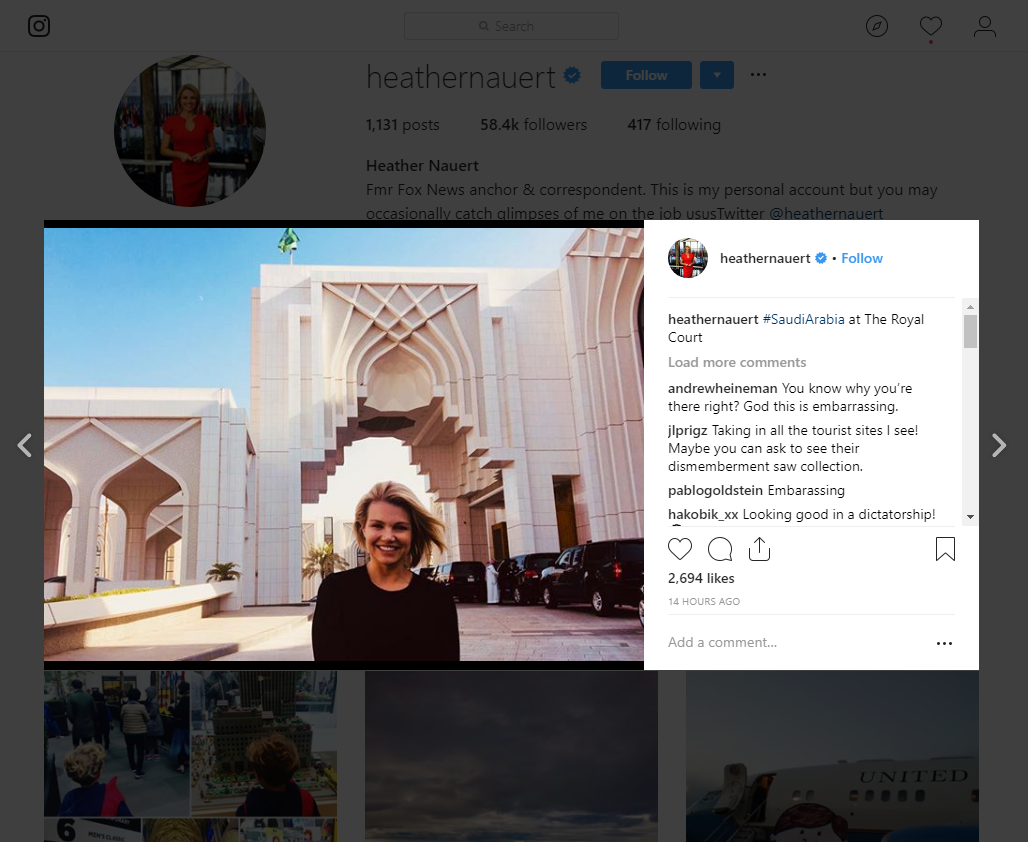The recent conversations surrounding the alleged disappearance and murder of Saudi journalist, Jamal Khashoggi inside of a Saudi Arabian embassy in Turkey has drawn international concern and many critical political discussions. The United States State Department staff are said to be investigating the incident of the missing contributor to The Washington Post’s Global Opinions section. Former Director of the U.S. Central Intelligence Agency and current U.S. Secretary of State, Mike Pompeo and other members of his team, including Heather Nauert, former Fox News host and current State Department Spokesperson, have visited Saudi Arabia to learn more about Khashoggi’s whereabouts.
During this time, both Pompeo and Nauert have come into criticism regarding images shown of them smiling during the investigation. Nauert’s critique is surprising since most journalists receive training in how to show empathy during bad news. Nonetheless, both individuals pave the way to discussing how vital photo images are and their role during a crisis.
Often there are many moving parts during a crisis. While executing every move to perfection is desirable, you can do a few things to reduce the backlash of your organization’s handling of the issue. Preventing the wrong photos of your team during a public crisis can be difficult. However, there are ways to avoid it.
While these may seem obvious to most people, we will mention a few things we’re sure both Pompeo and Nauert wish they had taken into consideration:
- Always appear to be diligent regarding resolving the issue at hand. For instance, Nauert stopping to take what a tourist/vacation type of photo while working on taxpayers’ money, is not sitting well with many individuals no matter their political affiliation. It is crucial to ensure those on the outside view your time and efforts as being laser-focused on the job at hand.
- Understand the tone of your mission and ensure public encounters with individuals match the crisis. For example, let’s look at Pompeo’s meeting with the Crown Prince Mohammed bin Salman held in front of media outlets. Ensuring your spokesperson’s body language and facial messages reflect the tone of the crisis is important, especially in front of a media caravan. Your facial expression must match the tone of the crisis. A look can cast a positive or negative tone on the situation.
- Remain neutral in your body language. Using Pompeo again as an example, him leaning in his chair towards Crown Prince Mohammed bin Salman, indicates a relaxed posture in the direction towards the Saudi official. A photo of you leaning physically towards a person typically shows you agree with the person or have a good relationship with them. In this case, it looks as though Pompeo is on the side of Saudi Arabia.
Again, you can’t perform to perfection under a crisis, but preventing your organization from taking the wrong photos will help to reduce negative speculation.
Your goal is to end the crisis, not add to it.



